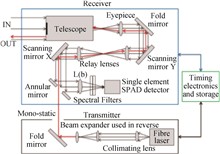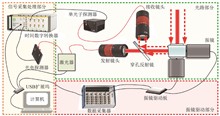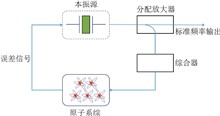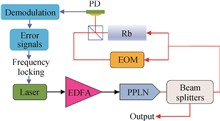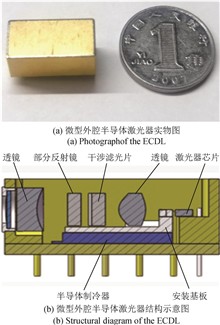The fundamental principles of single⁃photon imaging technology are introduced, along with an analysis of its advantages of high sensitivity, high temporal resolution and high photon utilization efficiency. The technical characteri⁃stics of single⁃point scanning and multi⁃pixel single⁃photon imaging are elaborated, with discussions on their applications in scenarios such as long⁃range imaging, underwater imaging, and imaging in complex environments. Principles of traditional single⁃photon imaging algorithms and deep learning⁃based algorithms are presented, followed by a comparative analysis of their application effects under conditions of sparse echoes, strong noise and multi⁃peak signals. The outlook for the future development of single⁃photon imaging technology is proposed, highlighting that innovative hardware systems, optimized imaging algorithms and interdisciplinary technology integration will further advance the field toward higher accuracy, efficiency and intelligence.
To achieve fast and high⁃accuracy detection with single⁃photon light detection and ranging(LiDAR), this paper designs a high⁃flux and high⁃repetition⁃rate single⁃photon LiDAR system and proposes a waveform correction method tailored for this system. By increasing the photon counting rate, the system significantly reduces the single⁃pixel acquisition time. Meanwhile, the waveform correction method effectively addresses the issues of waveform distortion caused by the dead time of single⁃photon detectors under high⁃flux and high⁃repetition⁃rate conditions, thereby enhancing the inversion accuracy of target signal strength and depth. The system employs a free⁃running single⁃photon detector in the near⁃infrared band with a dead time of 1 200 ns and a laser repetition rate of 3 MHz, and the single⁃pixel acquisition time is set to 1 ms. Simulation and experimental results demonstrate that the proposed method achieves a distance inversion accuracy of 4.9 mm and a photon flux inversion accuracy of 0.16 photons. In the 3D imaging experiment, using a 50 × 50 point⁃to⁃point scanning pattern, the imaging plane fitting accuracy reaches 8 mm, enabling high⁃precision 3D imaging of small UAVs at close range. This study provides a new technical approach for the application of single⁃photon LiDAR in fast imaging fields such as target detection and resource mapping.
This paper introduces the current development status of high⁃performance cold atomic clocks serving as frequency standards,elaborates on the fundamental principles, performance specifications, applications in metrology and other fields, and development trends of fountain clocks and optical clocks. The analysis focuses on the impact of atomic clock technology advancements on the redefinition of the "second", explores the evolutionary pathways and current status of the redefinition of the "second". It is pointed out that the performance of atomic clocks can be improved by increasing the coherent interaction time, reducing the atomic temperature, and optimizing the uncertainty evaluation strategy. It is proposed that the uncertainty level of atomic clocks can be further improved and their application scope expanded by implementing integrated space⁃time measurements, optimizing the evaluation methods for gravitational redshift, and establishing high⁃level intercontinental remote comparison links.
An integrated system for laser frequency locking of atomic interferometers was developed in order to improve the miniaturization and stability of atomic interferometers. The integrated circuit system is used for frequency stabilized spectral signal acquisition, modulation and demodulation, and ZYNQ is used to complete the digital Proportional Integration Differentiation (PID) function to realize the low⁃noise and fast locking of the laser frequency. The integrated modem module has a circuit area of only 77 mm × 113 mm, which is capable of meeting the laser locking requirements for use in most alkaline atomic energy stages. Experiments were conducted to verify the performance of the integrated system for laser frequency locking in atomic interferometers, and the results show that: the frequency fluctuation after laser frequency locking is 98.81 kHz@7 h; the re⁃locking time of the laser frequency is 600 μs@100 MHz; and there is no de⁃locking in a long⁃term measurement of 100 h. This system provides a strong support for promoting the application of atomic interferometer in complex environments such as geological research and resource exploration.
In order to solve the problems of wide linewidth of the vertical cavity surface emitting laser (VCSEL) used in traditional miniature and chip scale coherent population trapping (CPT) atomic clocks, a micro external cavity diode laser (ECDL) for CPT rubidium atomic clocks with a wavelength of 795 nm was designed using a self⁃developed laser chip and millimeter sized optical components. The laser has a size of less than 1 cm3 and features narrow linewidth and good direct modulation characteristics. Based on this ECDL, a miniature atomic clock with non⁃VCSEL light source has been achieved for the first time, with a short⁃term frequency stability of 3.70 × 10-11@1 s and 1.35 × 10-12@1 000 s. This is of great significance for the subsequent realization of high⁃performance miniature or even chip⁃scale atomic clock products.





